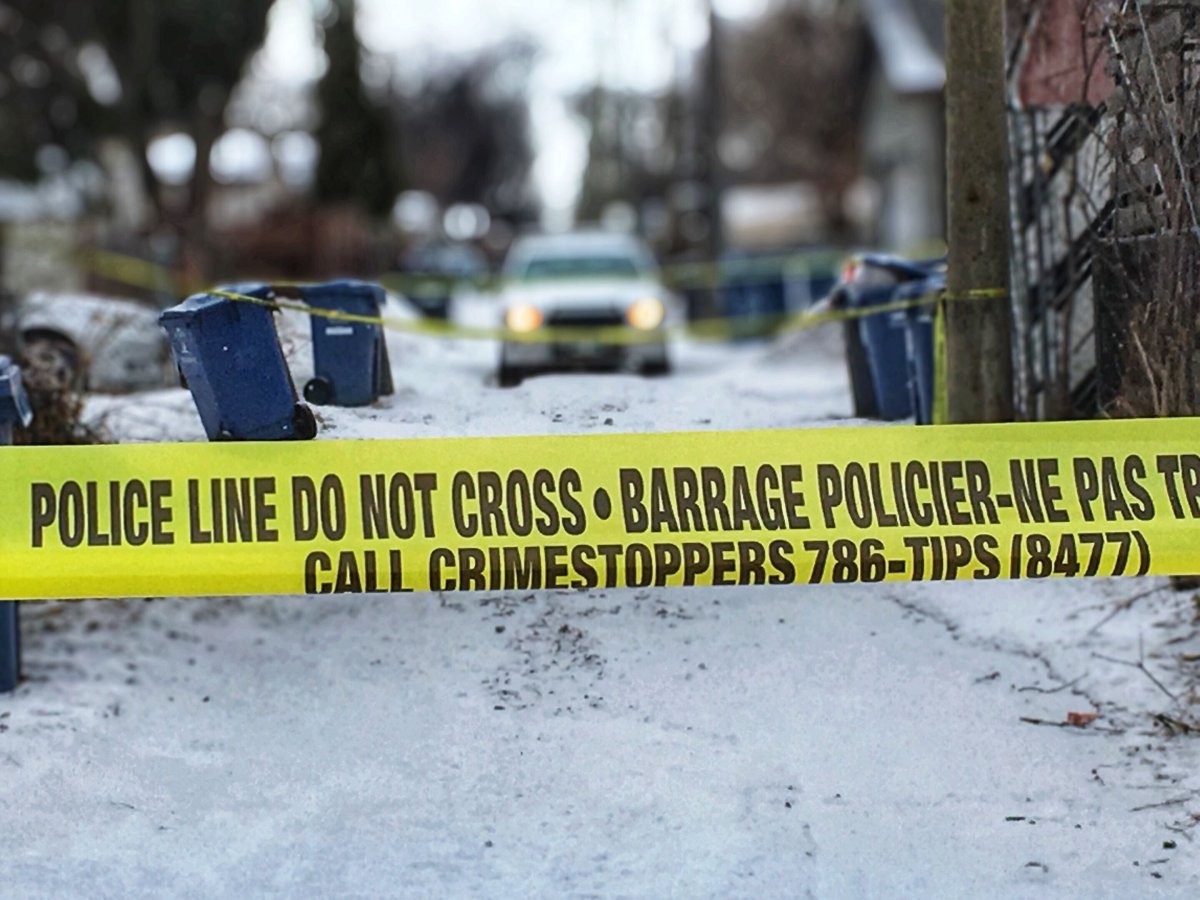Whether pulling their pistol, taser or baton, Winnipeg police officers used force on people 857 times in 2019, according to an annual report filed to the Winnipeg Police Board this week.

Use of force is a wide term — it covers police handcuffing a person and using weapons like pepper spray or shooting their gun at suspects.
Winnipeg police went to 231,668 calls for service in 2019 — 857 saw police use force or pull a weapon, according to the 2019 annual report on police use of force penned by police Chief Danny Smyth and submitted on May 15. That report is attached to the Winnipeg Police Board’s June 8 agenda.
Police use of force has gained intense scrutiny amid widespread protests over the death of a 46-year-old U.S. Black man, George Floyd, in police custody on May 25.
Bystander video shows Minneapolis, Minn., police officer Derek Chauvin pressing his knee on Floyd’s neck, ignoring Floyd’s cries of “I can’t breathe” until he eventually stopped moving. Chauvin has since been charged with second-degree murder.
Advocates in Winnipeg’s Black community have since organized a solidarity protest scheduled for Friday.
Meanwhile, police reform advocates and criminal justice researchers have long criticized Winnipeg police for their use of deadly force.
“Police use of force is one part of the story — when you have something like three Indigenous persons shot and killed by Winnipeg police at the beginning of the coronavirus pandemic and it kind of gets swept under the rug because of COVID, but also because of police information control practices, it’s shameful,” University of Winnipeg associate criminal justice professor Kevin Walby said.
“It is a complete injustice that I think people should be more upset about.”
Winnipeg police shot three people while responding to calls for service in the span of 10 days in early April. All were Indigenous. All died.
Winnipeg police are required to file written reports when they use force on someone or discharge a weapon. That incident is documented through an internal electronic reporting system known as Blue Team.
Police say the reporting system allows use of force experts to review and assess whether the use of force was reasonable and necessary.
Police collect ethnicity data from police reports and use of force reports, Winnipeg police public information officer Const. Jay Murray said in an email, but don’t include that data in their public annual report.

Get breaking National news
“We don’t always know someone’s ethnicity — it isn’t always disclosed to us,” Const. Murray wrote in a follow-up email.
“To compile all the information we have, with the understanding it wouldn’t be 100 per cent accurate; you would need to go through FIPPA.”
FIPPA refers to the Freedom of Information and Protection of Privacy Act, Manitoba’s public records law.
Researchers like Walby and advocates like lawyer Corey Shefman believe police should be transparent with that data, even if it’s incomplete.
“Having that type of data is crucial for understanding the disparate and disproportionate impact police have on people of colour and the indigenous community in Winnipeg in particular,” Shefman said.
Under the Commission on Accreditation for Law Enforcement Agencies’ protocol, Winnipeg police are mandated to write reports and conduct administrative reviews whenever a police officer uses force on anyone. The CALEA is an American-based third-party credentialing authority made up of former police and the public and private sectors.
The term ‘use of force’ may include empty hand controls — officers using their empty hands to restrain or strike people — or intermediate weapons like batons, pepper spray and tasers.
Researcher Walby thinks CALEA’s use-of-force categories are flawed.
Walby and Shefman took issue with the latest use-of-force data itself.
“If you go by the official numbers of the police, then the number looks smaller than people would report in the North End of the city, in all of these areas in the inner city,” Walby said.
“Police should be far more transparent about the encounters that they’re having with racialized persons in Winnipeg, in Canada — sociologists, criminal justice scholars have been calling for this for years.”
Shefman was more pointed.
The term use of force also includes deadly force — officers either shooting a firearm at a suspect or pointing their gun to get someone to comply with orders.
Winnipeg police shot five people in 2019, according to Smyth’s report, two of whom died.
Three people filed complaints to the Winnipeg Police Service about excessive force in 2019, Smyth’s report reads, though he noted Manitoba’s police watchdog, the Independent Investigation Unit, assumes responsibility for investigating serious injuries, while people can also file civil complaints to the Law Enforcement Review Agency of Manitoba.
“Additional complaints may have been made to the Law Enforcement Review Agency of Manitoba; however, the results of these potential grievances are unknown at this time.” Smyth wrote in his report.
Smyth wrote that one of the 2019 excessive force complaints was unfounded, another was abandoned by the person who filed the complaint and the third was not supported by evidence.
In 2019, 253 people reported injuries after police used force on them, according to Smyth’s report. That same year, 88 police officers were injured.
Police resolved 99.63 per cent of all calls in 2019 without using or presenting force, according to Smyth’s report.
Without including coercive action — officers pointing their gun, pulling out a baton, pepper spray or taser or deploying a police dog to get people to comply with orders without striking a suspect — Winnipeg police used force in 707 incidents.
Police use force in one of approximately every 270 calls for service, based on the five-year average provided in Smyth’s report.
Each police use of force report may include multiple types of force — using both a baton and a taser, for example — Smyth wrote in his report, which explains why percentages in his report’s data table on the types of police use of force in 2019 add up to higher than 100 per cent.

In 2019’s reported police use of force incidents, 74.45 per cent included soft empty hand control, 40.96 per cent included hard empty hand control, 35.12 per cent included intermediate weapons and 19.25 per cent included deadly force — officers either pulling their gun or shooting it.
Soft hand empty controls refer to restraints not likely to injure people, Const. Murray said — police handcuffing suspects, holding their arm or pressure points.
Hard empty hand control refers to police using physical techniques that are more likely to injure people but are not intended to cause grievous bodily harm or death, Const. Murray said.
The types of force data show a slight increase in police use of intermediate weapons — tasers, batons and pepper spray — over the five-year average, but decreases in other types of force, according to Smyth’s report.
Meanwhile, Walby and Shefman point to reforming and axing the Winnipeg police budget amid the protests against police violence in America, Canada and across the globe.
“Defund the police, and I say that with all seriousness,” Shefman said.
“For too long, politicians, not just in Winnipeg but throughout Canada and North America, have been too willing to give… police more money, more money, more equipment, more militarization.”
Shefman would rather see Winnipeg put part of the money budgeted for police into community services — like social work, mental health work and grassroots organizations like the Bear Clan Patrol — than the WPS.
The Winnipeg police account for $304 million of the $1.15 billion City of Winnipeg 2020 spending budget.
— with files from the Associated Press








Comments